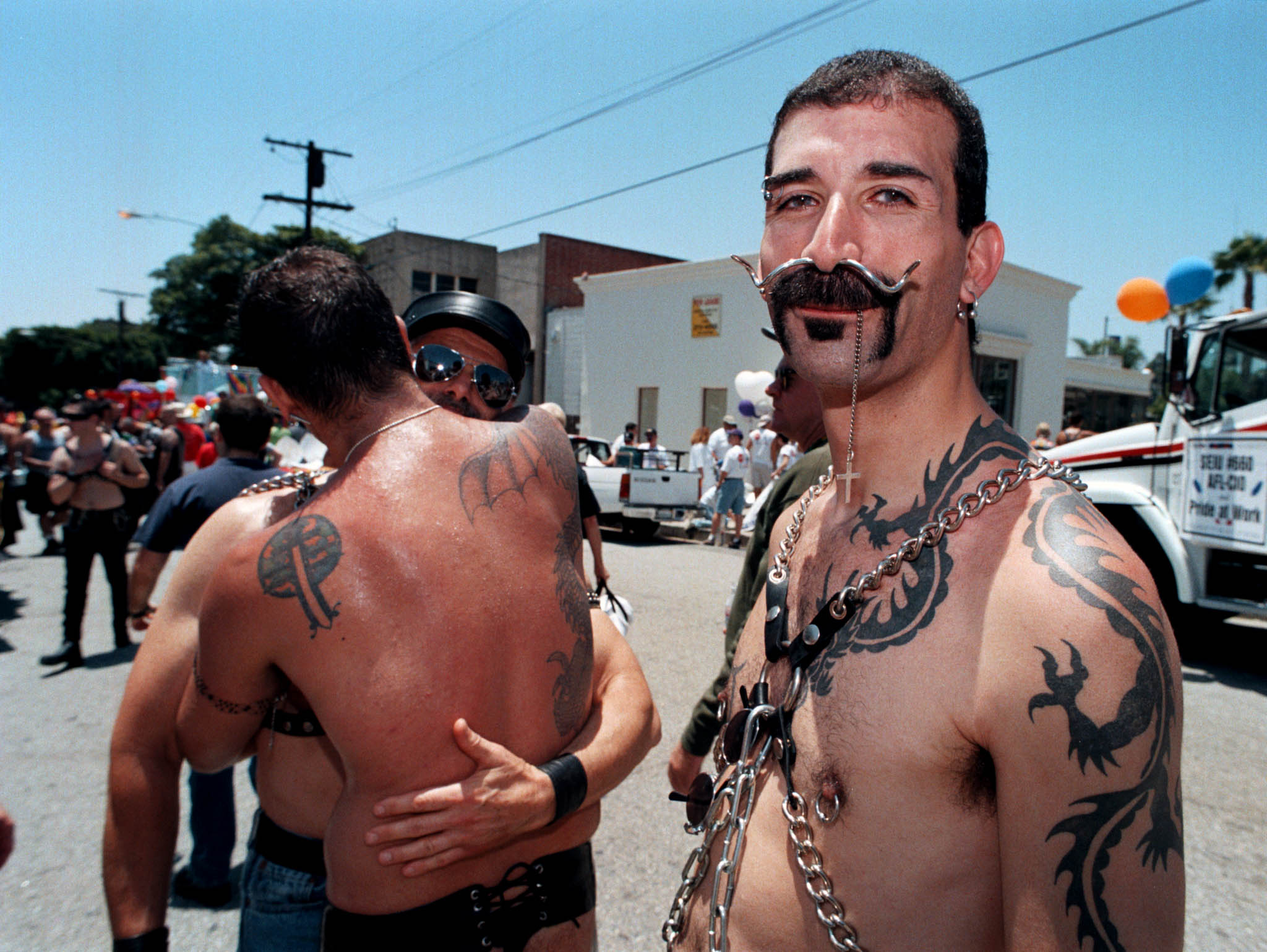BDSM and kink don’t belong in Pride celebrations. This is why
Every year we have this debate, but the facts stay the same: It’s a matter of politics and consent


Your support helps us to tell the story
From reproductive rights to climate change to Big Tech, The Independent is on the ground when the story is developing. Whether it's investigating the financials of Elon Musk's pro-Trump PAC or producing our latest documentary, 'The A Word', which shines a light on the American women fighting for reproductive rights, we know how important it is to parse out the facts from the messaging.
At such a critical moment in US history, we need reporters on the ground. Your donation allows us to keep sending journalists to speak to both sides of the story.
The Independent is trusted by Americans across the entire political spectrum. And unlike many other quality news outlets, we choose not to lock Americans out of our reporting and analysis with paywalls. We believe quality journalism should be available to everyone, paid for by those who can afford it.
Your support makes all the difference.June is fast approaching, meaning soon it will be the gayest time of year. While Pride Month is undoubtedly exciting for gays like me — who doesn’t love a month-long celebration of a marginalized group overcoming adversity and oppression? — it is also exhausting. For with all the rainbows and glitter and sparkle comes what HITC’s Shania Wilson today somewhat understatedly called our community’s “annual discourse” over whether kink — specifically BDSM — should be included in Pride celebrations. In some ways, I dread writing about this topic. As Wilson’s article shows, people have a lot of opinions about it. In my line of work, I spend a lot of time debating which issues deserve my political capital and whether I have anything worthwhile to add to the conversation. Often, the answer is no. But as a gay man who has enjoyed a bit of kinky play in his day (sorry, Mom), I think this time I do. So, allow me to be blunt.
I don’t think BDSM and kink should be included in Pride celebrations.
I won’t get into the wherefores and hows of my sex life, because frankly I don’t think it is very interesting to anyone outside me and my partners. It is also none of your business, except to illustrate that I am not trying to shame anyone for their private sexual fetishes and kinks. So long as all parties are of age, consenting and safe, I’m very much of the mind that anything goes.
That is, until you do it in public.
Here we come to my first issue with BDSM and kink at Pride: consent. You may have no problem parading your sex life down North Halsted in Chicago or through Trafalgar Square in London, but others might not be so willing to participate in your fetish or to even see it. As Pride is held in a public space and is a public event, it should be open to the public while also following the standards of public decency.
Overtly sexualized displays — or in more extreme instances, public sex and nudity — breech the boundaries of good taste and decency even as Pride stretches what is and is not acceptable. It alienates members of our community who are modest, who have ethical or philosophical objections (as many feminists do), who have children, or who simply do not want to participate in your sex life as unwilling voyeurs. BDSM and kink displays deter many of us from attending, including LGBT friends of mine with small kids. Pride should be for everyone in the LGBT community. In order for that to be possible, boundaries must be set and respected.
This may sound reactionary or like arguments used against Pride in the first place. After all, there was a time when LGBT people were considered an affront to public decency. What, I hear you asking, is the difference between that and kink?
The answer there is a matter of political salience.
Yes, Pride started out as a reaction against heteronormative sexuality and a fight against the oppression LGBT people face. It commemorates the Stonewall uprising, when LGBT people fought back against the literal policing of our sexualities. But that was down to an identifiable class of individuals discriminated against in law and culture based on shared characteristics: their sexual orientation and gender expression.
This distinction matters. Kink and BDSM are not sexual orientations, but rather sexual preferences. An orientation is innate and immutable. A preference can change.
No one is oppressed because they’re kinky, certainly not in any way that is comparable to the past and even current oppression and marginalization faced by LGBT people. LGBT people built a community and a political coalition because we were oppressed on the basis of who we love and who we are. This gives us a shared struggle and history, as our fight against laws like Section 28 in the UK or Proposition 8 in California illustrates. We have mutual political interests built out of a common oppression.
Kink and BDSM, however, are enjoyed by people of all sexual orientations. There is no unifying political identity to practitioners of BDSM. There is a massive difference between a lesbian woman being able to display a photo of her and her wife on her desk and someone putting up a picture of a sex scene that could be out of Fifty Shades of Grey. A man holding hands with his husband is not the same as a man holding his “pup’s” leash as he leads him around on all fours, clad in leather and wearing a gimp mask.
In both instances, the former is about who you love, while the latter is about how you have sex. The struggle for lesbian, gay, and bisexual equality was always about gaining parity with straight people and straight couples, of having our relationships recognized as equally valid and legitimate. It has never been about our sex lives.
It is in this way that the fight for lesbian, gay, and bisexual rights — as well as transgender rights — was always about being able to be one’s authentic self without fear of legal or cultural persecution. It was about identity, not behavior. There is no legal or even cultural discrimination against people who practice BDSM.
Being unable to engage in your kink in public, forcing others to unwillingly participate by exposing them to it, is not discrimination. Behavior, especially sexual behavior, and especially public displays of sexual behavior have always been policed, even within the gay community. If I started having sex in the middle of Halfway to Heaven, you better believe the drag queen would have something to say about that. And rightly so.
Pride should keep its focus on LGBT folks and our rights, equality, and liberation — not on a fetish that can include straight people and ostracizes some members of our own community. Every member of our community and all of our allies, from children to pensioners, should be able to celebrate their sexual orientation or gender identity without being forced to participate in someone else’s sex life.
Join our commenting forum
Join thought-provoking conversations, follow other Independent readers and see their replies
0Comments